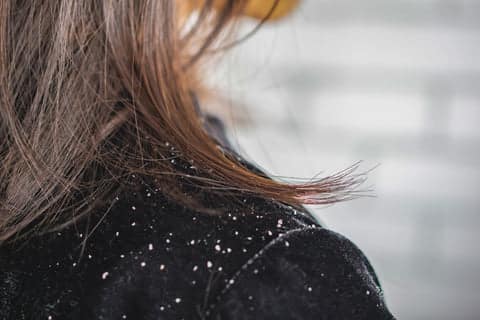
What is a dry scalp?
A dry scalp is exactly that. It’s where the skin of the scalp becomes dry due to a marked reduction in water, just as can happen over most other regions of the body. When this happens, flakes can be seen on the scalp itself and can fall onto clothing, which can be mistaken for dandruff.
What causes dry scalp?
The outermost layer of the epidermis (the stratum corneum) consists of dead skin cells with the natural oil of the skin (sebum) interspersed between the cells forming what’s called the lipid barrier. This oil barrier allows for a high degree of water to be retained by the skin preventing transepidermal water loss (TEWL) and keeping the skin tissues healthy.

What causes dandruff?
Dandruff happens when skin cells form too fast. The epidermis, or the outermost protective layer of the skin, constantly changes. The cells begin growth at the base layer, deeper in the skin, and gradually move to the surface. This process is called epidermal turnover. Ordinarily, it takes approximately 28 days for the cells to move through the skin and to reach the surface – once there, they fall away naturally or during washing.
Interesting note. Most of the dust in our homes comes from the 500 million (give or take a few!) skin cells we lose every day.
The increased epidermal turnover may be caused or exacerbated by abnormally high amounts of a yeast, Malassezia Globosa, which is always found in the scalp (even a scalp without dandruff). Dandruff occurs when the quantity of the Malassezia yeast increases for one reason or another, but other factors such as stress or dietary factors may also trigger the condition.

Treating Dandruff
Washing the hair and scalp with ordinary anti-dandruff shampoos helps remove scale, but some of these shampoos can be harsh and abrasive, exacerbating the problem in the long term. If the underlying cause is not treated properly, then the scale will quickly return. Shampoos that control the level of micro-organisms on the scalp, but which also have a calming and soothing effect on the irritated scalp tissues are usually the best form of treatment.
